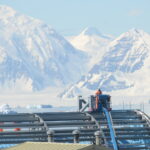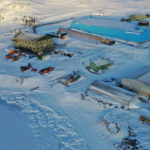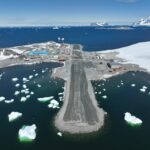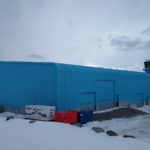In order to future-proof the British Antarctic Survey’s (BAS) capacity to continue to deliver world class environmental science and contribute to the global effort of addressing climate change, BAS has committed to achieve net zero carbon emissions from our directly owned operations before 2040, with a separate target to reduce carbon emissions from the BAS Cambridge office and our Antarctic Stations to zero carbon by 2030. This includes our largest station in Antarctica, Rothera Research Station.
The station currently relies on fossil fuels to meet the power, space heating and hot water demands. Diesel generators provide power for lighting, kitchen utilities, potable water production and diesel fired boilers for the central heating system and hot water. Solar photovoltaics (PV) and thermal panels installed across several buildings provide supplementary heat and power to the station. Find out more about our renewable energy systems.
As part of the efforts to decarbonise the BAS Estate in Antarctica, the Rothera Renewable Energy Project was granted funding in 2021 to contribute significantly to UKRI and BAS net zero targets. The project has produced a roadmap to transition the current energy system on station to renewable energy technology over the next ten years and is now working to realise that roadmap. Construction is expected to start at Rothera in 2026.
Challenges
Working in such a remote location with extreme weather conditions and sensitive ecology creates a number of challenges that need to be addressed to allow BAS to decarbonise Rothera Research Station in a sustainable way. These include:
Intermittency of renewable energy systems mean that reliable energy storage and management must be incorporated into the system. A robust and reliable energy system is essential to provide life support to those living on station;
Extreme weather conditions affecting the operation of renewable energy systems (ice on wind turbine blades, snow cover on PVs, daylight for half of the year);
Environmental impacts of renewable energy systems on local wildlife (birds, seals);
Potential disruption to the delivery of science from electromagnetic interference of energy systems and available space at Rothera
Requirement of multi-skilled staff on station to service and maintain a range of different energy systems that can be quite complex;
Minimal available space for the installation of renewable energy systems, for example, ice free ground for wind turbine installation or roof space for solar PVs;
Availability of a secure supply of sustainable alternative fuels, suitable for cold conditions at an affordable price
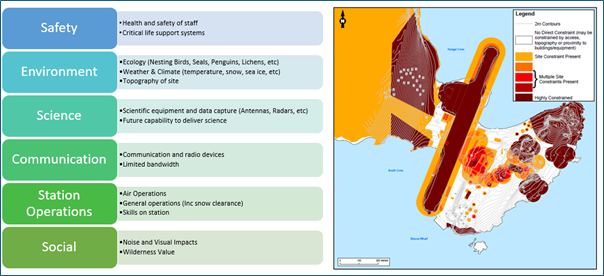
‘Figure 1 is an illustration of the constraints in deploying renewable energy at Rothera’
Aims
The project aims are to contribute significantly to:
- UKRI & British Antarctic Survey (BAS) Targets - net zero carbon by 2040
- Rothera Decarbonisation – zero emissions by 2030
The first step of the Rothera Renewable Energy Project is to ensure robust renewable energy technologies are considered through comprehensive feasibility studies, trialling of prototypes where appropriate and enabling works. The results of this preliminary work will feed into and define a sustainable energy strategy for Rothera aligned to the Rothera Decarbonisation Strategy.
Initial indications suggest that a multi-faceted technological approach will be needed to deliver the new energy strategy.
Here’s what we plan to do:
- electrification of the station using proven renewable energy generation;
- use of sustainable biofuels for back-up and resilience;
- energy demand reduction activities; and
- investigation into innovative energy technologies and solutions for future implementation.
15 January, 2025
Welcome to our fourth Postcard from Rothera Research Station, giving you an update on the latest progress as we modernise our largest station in Antarctica. Modernisation progress The season is …
10 July, 2024
Construction teams have completed significant stages of the British Antarctic Survey’s (BAS) Antarctic Infrastructure Modernisation Programme and joined the over-wintering staff for the first time as the 2023/24 summer season ended. The improvements, led by BAM and technical advisors Ramboll will transform future science and operations at Rothera, the UK’s largest polar research station in Antarctica.
4 March, 2024
As part of the British Antarctic Survey’s Antarctic Infrastructure Modernisation Programme (AIMP), the runway at Rothera research station has successfully been resurfaced by construction company BAM and the design completed by Ramboll. The station is a major hub for international science in Antarctica, and this significant achievement is a pivotal moment for BAS and the UK’s future polar research capabilities.
3 April, 2023
A new scientific and operational support facility at Rothera Research Station for British Antarctic Survey has been made weathertight, with the cladding complete and an operations tower installed.

